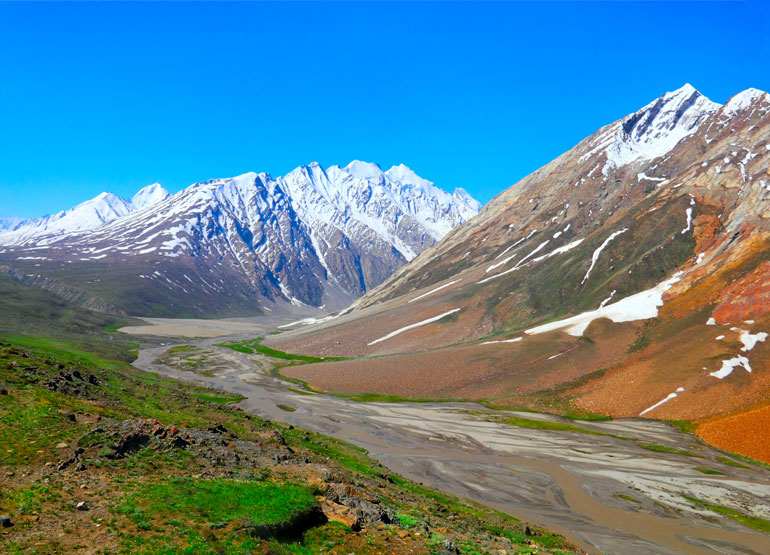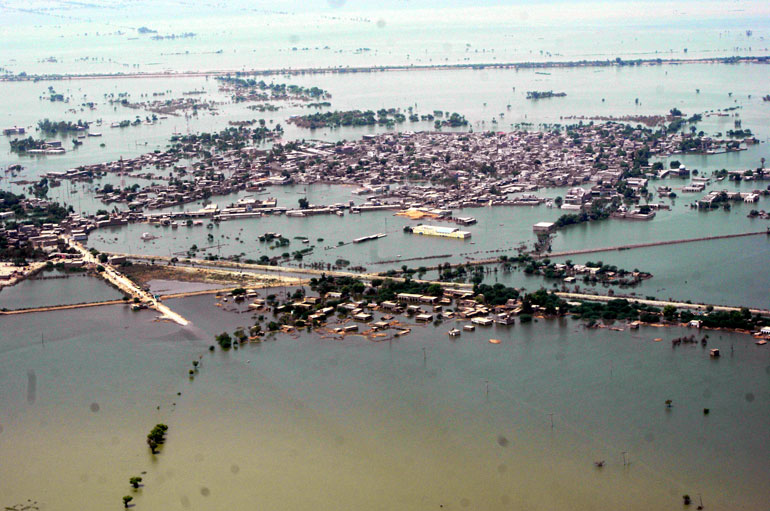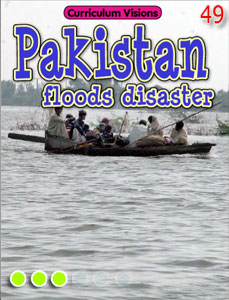Indus river

The Indus in the Himalayas.

The Indus flooding in Pakistan.
Location: 30N 70E (southwest Asia); length: 2900 kilometres (1800 miles); drainage basin 1.6 million square kilometres (500,000 square miles).
For much of its course, the Indus and its tributaries flow through desert. Even the high Himalayan valleys are arid. The water for the river comes from glacier and snowmelt on the high peaks.
The headwaters of the Indus produce some of the world's most spectacular scenery, as the river cuts a 4600 m (15,000 feet) deep gorge through the Himalayas. By contrast, when the river leaves the Himalayas, it spreads out over the great plainlands of northern Pakistan. In this region the main tributary of the Indus, the Punjab/Sutlej, together with other rivers flowing from the Himalayas, provide additional waters, so that the Indus can flow through the Pakistan deserts to reach the sea at Karachi. At the coast, the huge sediment load brought by the river forms a large swampy delta.
In an arid landscape, where the main sediment is of coarse-grained material, rivers tend to flow in broad shallow, braided channels. These quickly shift their paths in times of flood, and such floods and changes in route have caused many disasters in the past.
The Indus was one of the birthplaces of world civilization and attempts have been made to control the river for thousands of years. The value of the river is in its ability to provide the water that can turn the Punjab desert into a productive area of irrigated farmland.
The first major attempts to provide irrigation canals were introduced by the British in the 19th century. Since independence, Pakistan has made major efforts to control the river even further, including the construction of the Trabela Dam (one of the world's largest dams) in 1974.
The main problems confronting farmers today is the problem of salinization. Over the years, irrigation systems have been employed with inadequate drainage so that the salts dissolved in the water have not been flushed away, but have accumulated in the soil. Now huge areas of former productive farmland are waterlogged and saline. At present it is a struggle to increase the new areas under irrigation fast enough to replace those lost through poor management.



